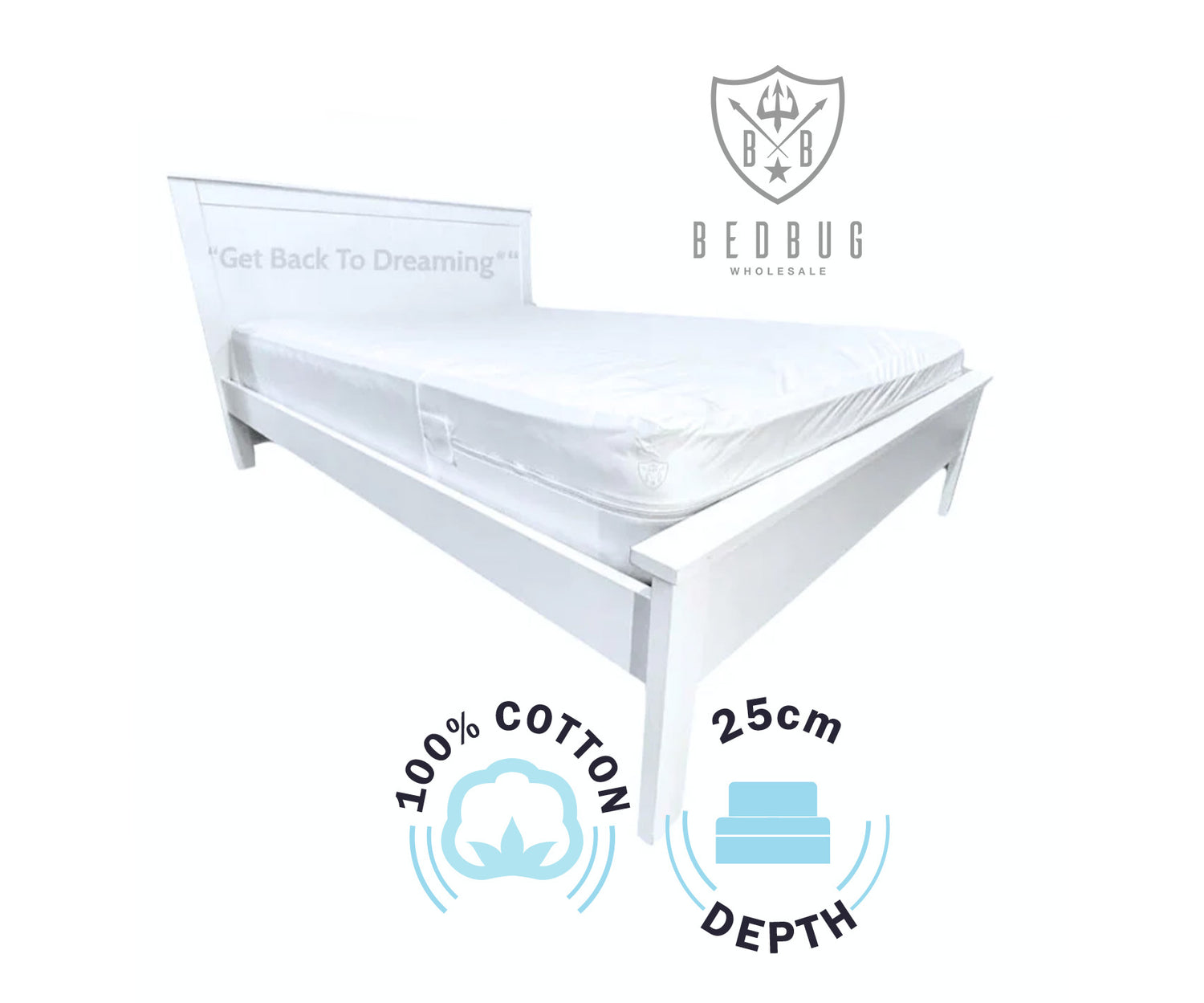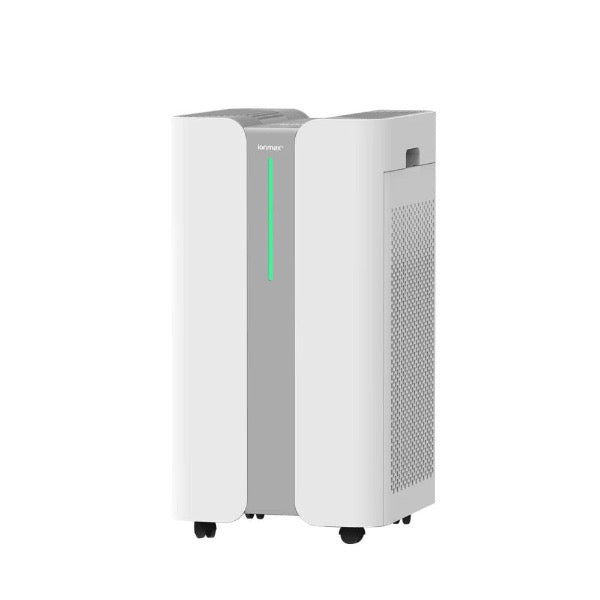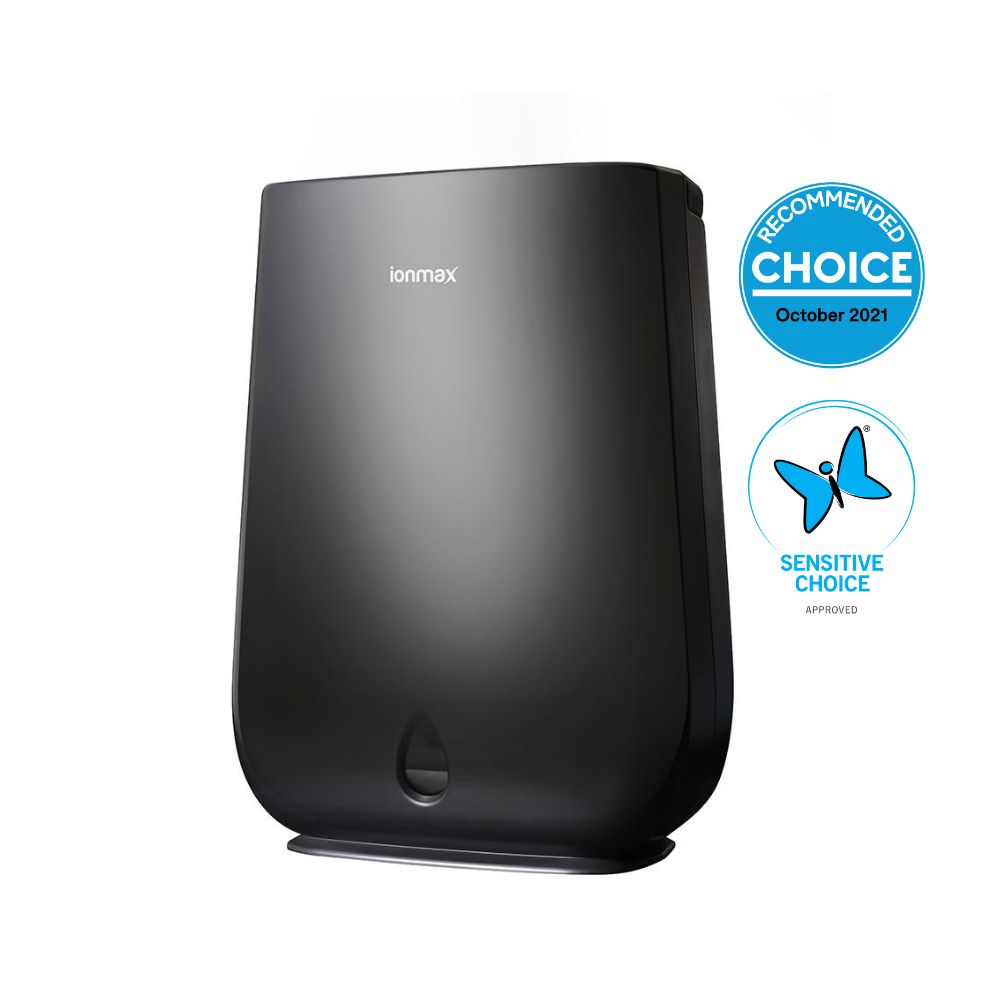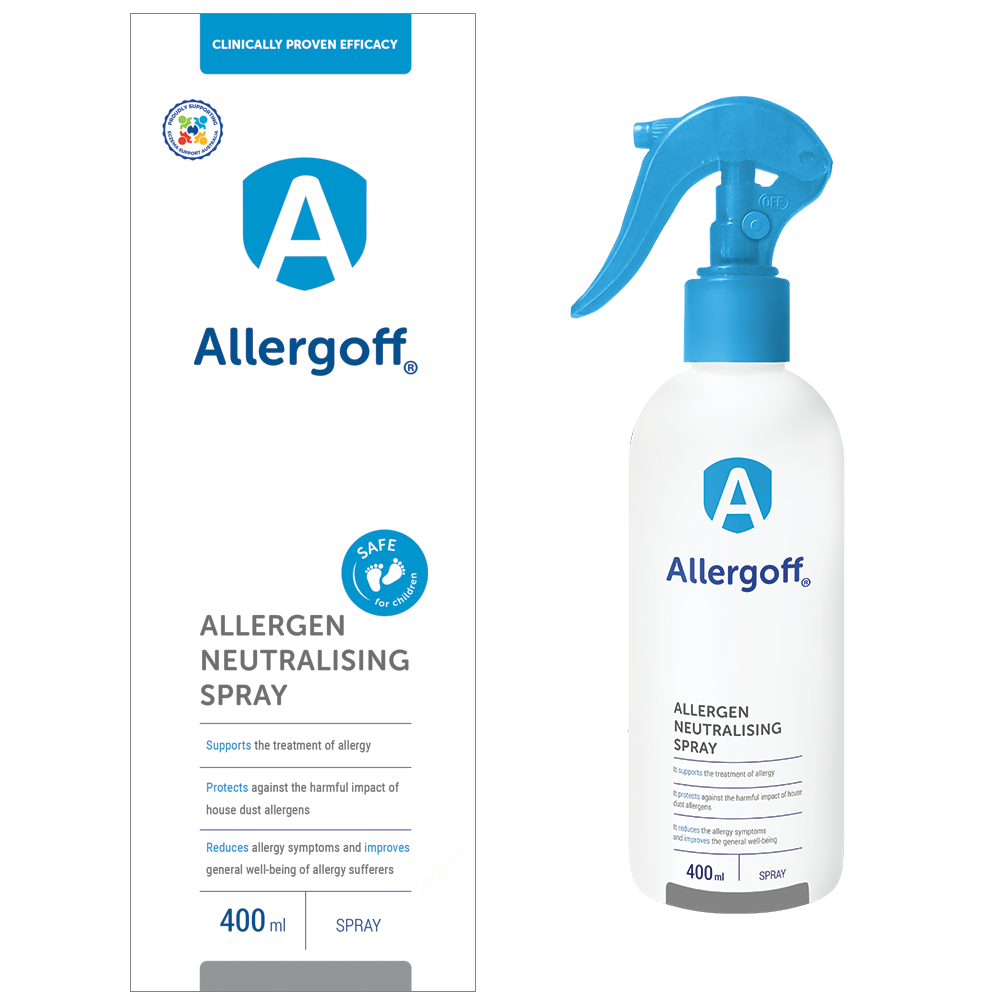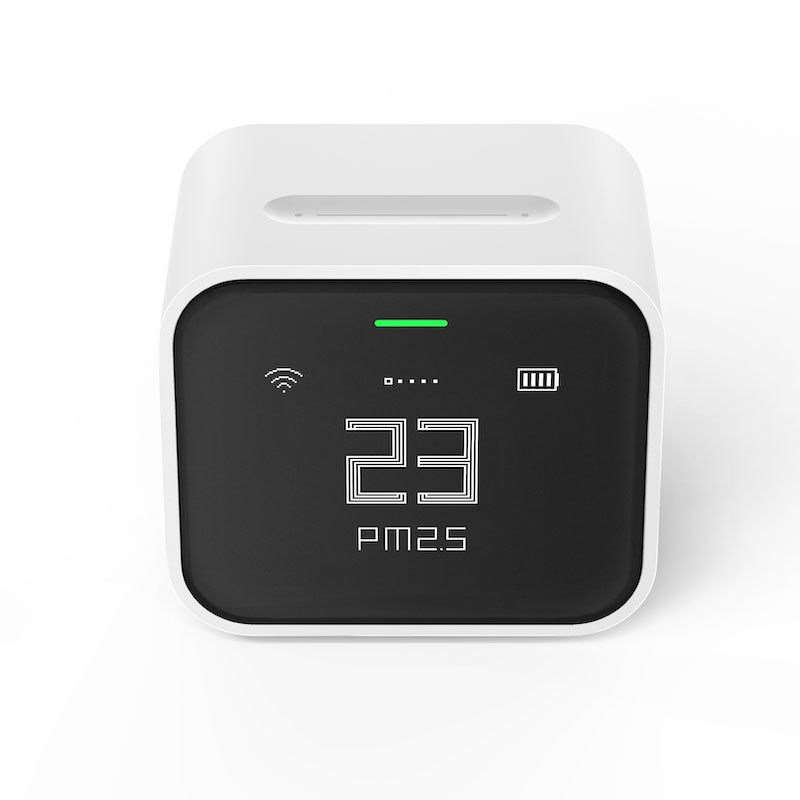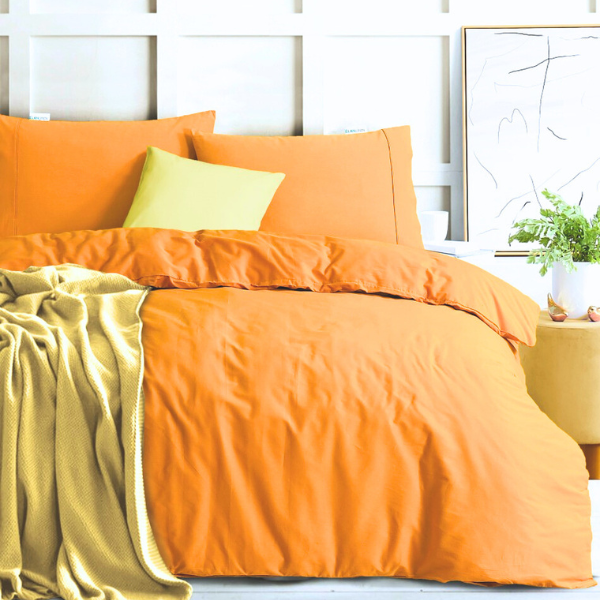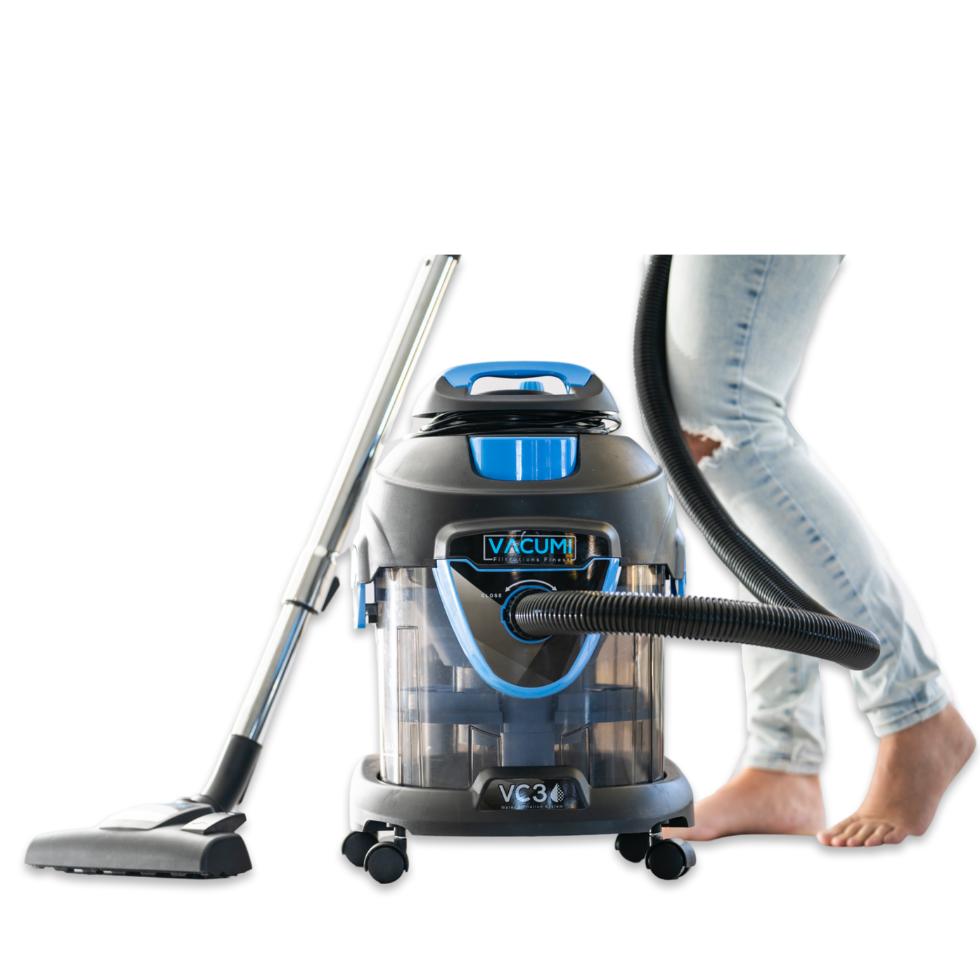Allergies are often caused by dust mites, pet dander, or pollen, which can accumulate in pillows over time. This can lead to symptoms such as sneezing, itchy eyes, and congestion. Hypoallergenic pillows can help reduce these symptoms by preventing the buildup of allergens in the pillow.

What are hypoallergenic pillows?
Hypoallergenic pillows are designed to minimise the likelihood of causing allergic reactions. These pillows are made from materials that are less likely to harbour allergens such as dust mites, pet dander, pollen, or mould, which are common triggers for people with allergies or asthma.
Who should get a hypoallergenic pillow?
-
Allergy sufferers: People with allergies to common triggers such as dust mites, pollen, pet dander, and mould will find hypoallergenic pillows beneficial as these pillows are designed to minimise exposure to such allergens.
-
Asthma patients: Individuals with asthma, especially those whose asthma is triggered by allergens, can experience improved sleep and fewer symptoms with hypoallergenic pillows, as these pillows help to create a cleaner sleeping environment.
-
People with sensitive skin: Those with eczema, dermatitis, or generally sensitive skin may find that hypoallergenic pillows, which are often made from materials less likely to irritate the skin, provide a more comfortable sleep.
-
Frequent sinus infections sufferers: People prone to sinus infections, which can be exacerbated by allergens, might see a reduction in infections with the use of hypoallergenic pillows due to the decreased presence of irritants.
-
Immune system compromised individuals: People with compromised immune systems, who are more susceptible to infections and allergies, could benefit from the reduced exposure to allergens that hypoallergenic pillows offer.
-
Children and babies: Since children and babies have more sensitive respiratory systems and skin, using hypoallergenic pillows can help prevent the development of allergies and ensure a safer, cleaner sleep environment.
What materials are hypoallergenic pillows made from?
Hypoallergenic pillows can be made from various materials, including:
- Memory foam: Some memory foam pillows are treated to resist allergens and are less likely to collect dust mites due to their dense structure.
- Latex: Natural latex pillows are inherently resistant to dust mites and mold, making them a good choice for allergy sufferers.
- Synthetic fillers: Pillows with synthetic fillers, such as polyester, are designed to mimic the feel of down while being easier to wash regularly, which helps remove allergens.
- Bamboo: Bamboo pillows often feature covers made from bamboo fibers, which are naturally hypoallergenic and resistant to dust mites and mould.
Some hypoallergenic pillows are also made from natural materials that have been treated to remove allergens. For example, some manufacturers use bamboo or organic cotton that has been treated with enzymes to break down any allergens present in the material. These natural options can be a great choice for people who prefer organic or eco-friendly products.
How do hypoallergenic pillows work?
Hypoallergenic pillows work by minimising exposure to allergens. These pillows are designed using materials and construction methods that are less hospitable to allergens such as dust mites, pet dander, pollen, and mold. Here's how they achieve this:
-
Materials that Resist Allergens: Hypoallergenic pillows are often made from materials that naturally resist allergens. For example, synthetic fibers, latex, and certain foams are less likely to attract and retain dust mites, mold, and other common allergens compared to traditional pillow materials like down feathers.
-
Dense structure: The density of materials like memory foam and latex makes it difficult for allergens to penetrate and accumulate within the pillow. This structure acts as a barrier, keeping allergens at bay.
-
Antimicrobial treatments: Some hypoallergenic pillows are treated with antimicrobial substances that inhibit the growth of mold, mildew, and dust mites. These treatments help to maintain a cleaner sleeping environment.
-
Washable covers: Many hypoallergenic pillows come with washable covers that can be regularly cleaned to remove allergens. Some are even made from fabrics like bamboo, which have natural hypoallergenic properties.
-
Non-porous materials: The non-porous nature of materials used in some hypoallergenic pillows prevents the accumulation of skin flakes and moisture, which dust mites and mould require for growth.
Can you wash hypoallergenic pillows?
-
Check the label: Always start by checking the manufacturer’s care instructions on the label. Some pillows may be machine washable, while others might only be suitable for spot cleaning or require professional cleaning.
-
Remove pillow covers: If your pillow has a removable cover, take it off before washing. Pillow covers often have different washing instructions and may be washed more frequently than the pillow itself.
-
Machine washing: If the pillow is machine washable, use a gentle cycle with warm water and a mild detergent. It’s best to wash two pillows at a time to keep the washing machine balanced.
-
Spot cleaning: For pillows that cannot be washed in a machine, spot clean them by dabbing stains with a mild detergent solution. Use a clean, damp cloth to apply the solution, and another clean cloth to dab away moisture.
-
Drying: Check the care label for drying instructions. Many hypoallergenic pillows can be tumble dried on a low heat setting. Adding a couple of tennis balls to the dryer can help fluff up the pillows as they dry. For pillows that aren’t dryer-safe, air drying in a well-ventilated area away from direct sunlight is recommended. Ensure the pillow is completely dry before using it again to prevent mold growth.
-
Regular maintenance: Even if the pillow can’t be washed frequently, airing it out regularly and using dust mite pillow protectors can help keep it clean and extend its lifespan.
Where to buy hypoallergenic pillows in Australia?
Dust Mite Allergy Solutions provides a selection of hypoallergenic pillows crafted from materials suitable for individuals with allergies.
Frequently asked questions about hypoallergenic pillows
Can hypoallergenic pillows completely eliminate allergy symptoms?
Hypoallergenic pillows are designed to significantly reduce allergens such as dust mites and pet dander, which are common triggers for allergic reactions. While they can greatly minimize your exposure to these allergens, they might not completely eliminate all allergy symptoms for everyone. The effectiveness can vary based on individual sensitivities and the specific allergens causing reactions.
How often should hypoallergenic pillows be replaced?
Like any pillow, hypoallergenic pillows should be replaced periodically to ensure they remain effective and hygienic. Generally, it's a good idea to consider getting a new hypoallergenic pillow every 2 to 4 years. Regular cleaning and proper care can extend their lifespan, but replacing them is necessary when they start to lose shape or their hypoallergenic properties diminish.
Are hypoallergenic pillows also resistant to bed bugs and other pests?
Hypoallergenic pillows primarily focus on minimizing allergens, not necessarily pests like bed bugs. However, materials used in some hypoallergenic pillows, such as memory foam and latex, are less inviting to pests compared to traditional pillow fillings. For specific bed bug resistance, look for pillows labeled as such or consider using protective encasements.
Is there a difference in comfort between hypoallergenic and non-hypoallergenic pillows?
Comfort largely depends on personal preference and the materials used in the pillow. Hypoallergenic pillows come in various materials like memory foam, latex, and synthetic fills, each offering different levels of support and comfort. Some people may find no noticeable difference in comfort, while others might prefer the feel of one material over another.
Can I use regular pillowcases on hypoallergenic pillows, or do I need special ones?
You can use regular pillowcases on hypoallergenic pillows, but using hypoallergenic or allergen-proof pillowcases can enhance the benefits. These special cases provide an additional barrier against dust mites and other allergens, keeping your sleeping environment even cleaner.
How do I know if I need a hypoallergenic pillow?
If you frequently wake up with symptoms like sneezing, stuffy nose, itchy eyes, or respiratory issues, it might be a sign that allergens in your sleeping environment are affecting you. Switching to a hypoallergenic pillow can help reduce these symptoms by providing a cleaner sleeping surface.
Are hypoallergenic pillows more expensive than regular pillows?
The price of hypoallergenic pillows can vary, but they may be slightly more expensive than standard pillows due to the specialized materials and manufacturing processes used. However, the investment might be worth it for the allergy relief and improved sleep quality they provide.
Can children and infants use hypoallergenic pillows?
Hypoallergenic pillows can be suitable for children and infants, especially those with allergies or sensitive skin. However, it's essential to choose a pillow that's appropriate for their age and size. For infants, ensure that any pillow used meets safety guidelines to prevent the risk of suffocation.
How do hypoallergenic pillows impact sleep quality beyond allergy relief?
Beyond reducing allergen exposure, hypoallergenic pillows can improve sleep quality by offering supportive and comfortable materials that cater to various sleeping positions. Some materials, like memory foam, conform to your head and neck, providing support that can alleviate pain and discomfort. Improved sleep environment cleanliness can also enhance overall sleep quality.


